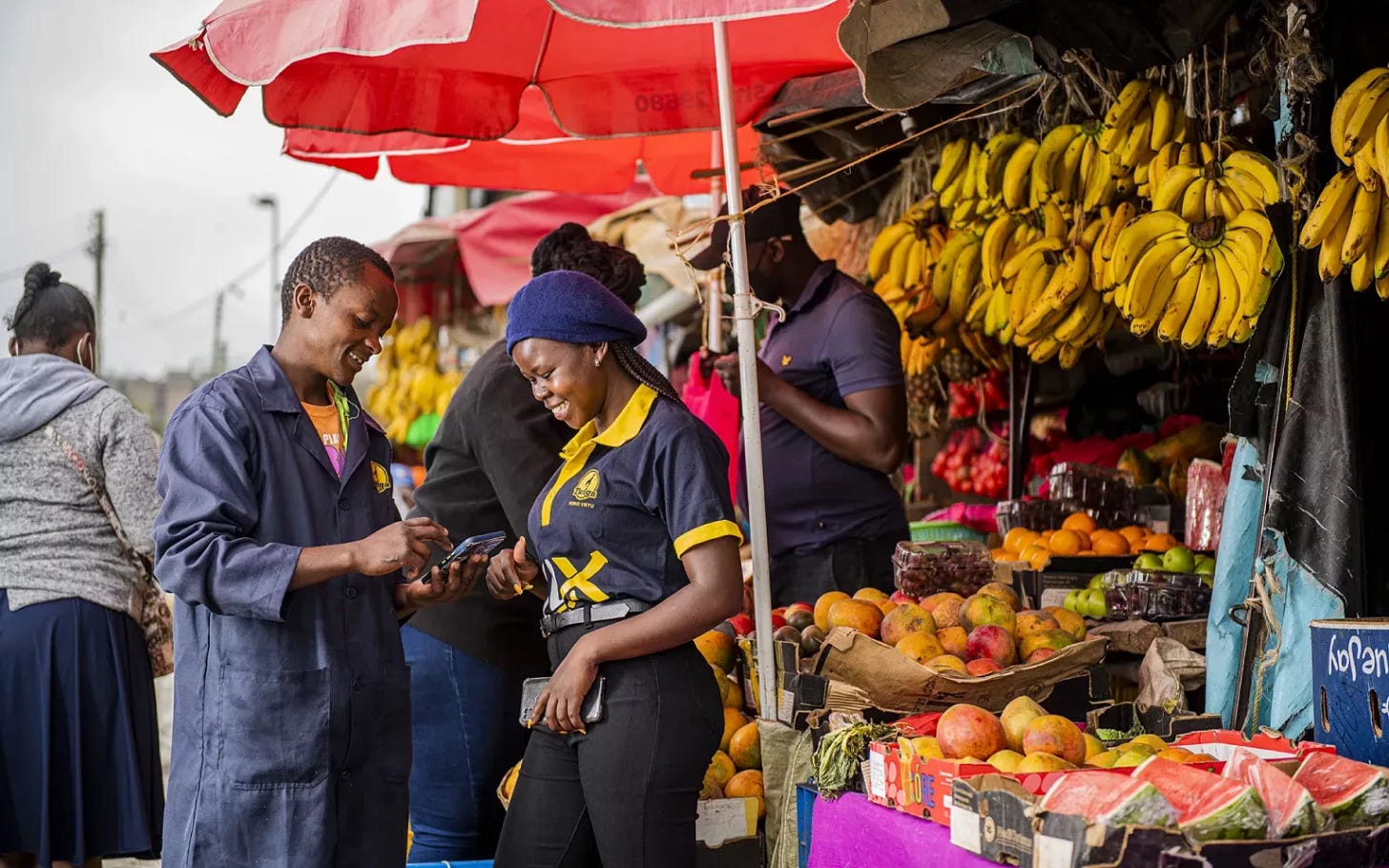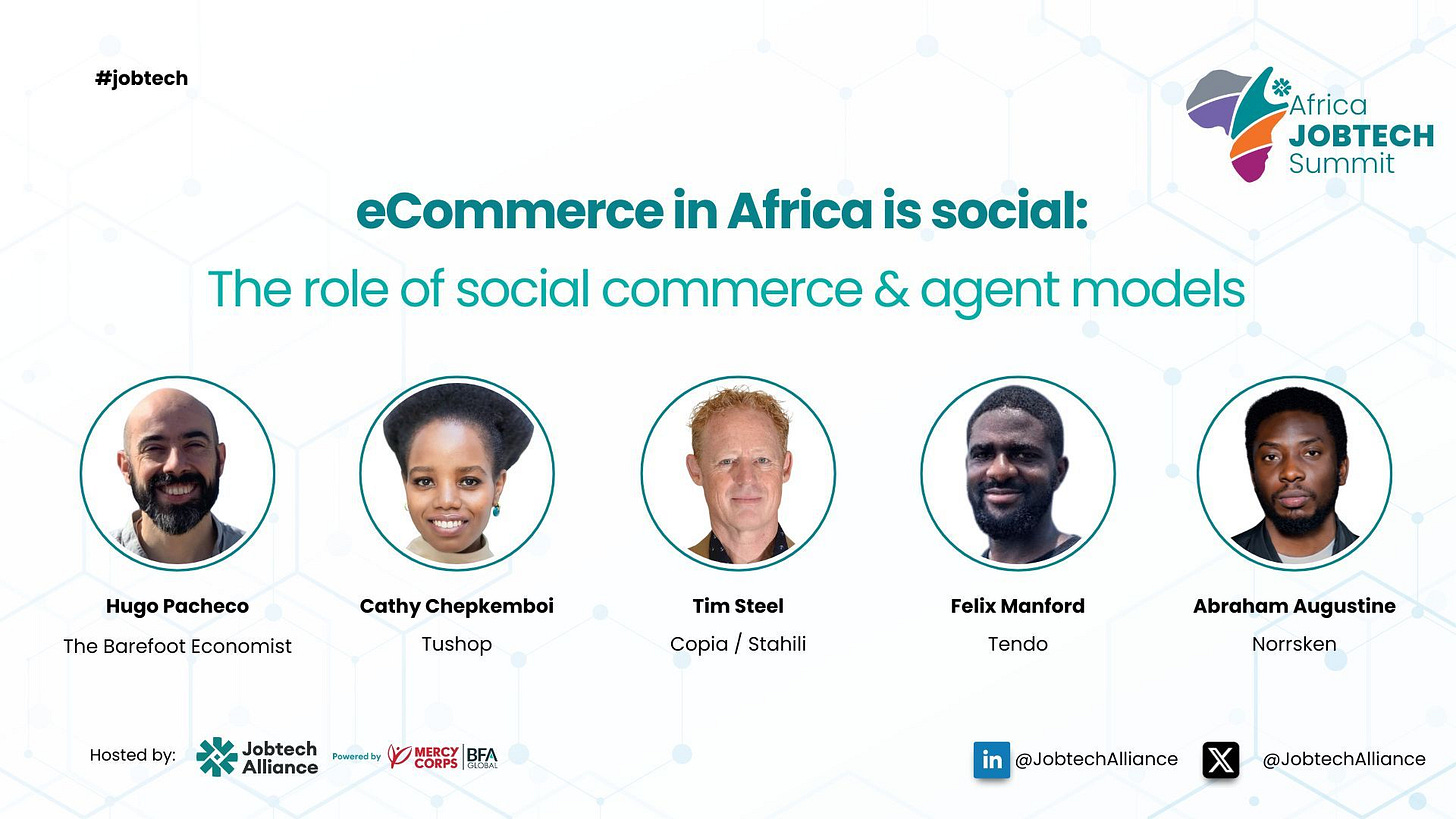🌯Inclusive FinTech Knowledge Bites [Week #67]
How Twiga is transforms distribution, MTN is powering digital credit in Africa, and the infrastructure for MSMEs that banks can’t reach.
Hey,
I’m Hugo Pacheco, and this is The Barefoot Economist —a newsletter where, every week, I break down three essential stories on last-mile technology, emerging market innovation, and financial inclusion. Consider it your bite-sized takeaway to stay informed, sharp, insightful, and easy to digest.
This week on The Barefoot Economist:
💡 Twigga new Lean, Mean, Distribution Machine
🧱 MTN lay down Africa’s next digital credit builders
🔄 The Liquidity Loops: Credit That Flows With the Hustle
Enjoy your reading!
💡 Twigga new Lean, Mean, Distribution Machine

We’ve all been bitten by the siren call of vertical integration, owning every link in the chain, from seed to shelf. But as Twiga’s latest pivot shows, sometimes the smartest move is to let go of the anchors and dance with partners who already know the beat. Below, you’ll find the distilled wisdom from their asset-light transformation, reframed through a lens that celebrates agility, pragmatism, and the art of the blend.
Twiga Foods’ shift from owning the field to empowering the field marks a milestone in African B2B commerce. By acquiring but not assimilating three distributors, Twiga transforms fixed costs into variable agility, aligns itself with Kenya’s informal retail giants, and refocuses on data-driven decision-making. This playbook underscores a broader startup maturity: restraint over reach, partnerships over possession, and the unglamorous grind of operational excellence over headline-grabbing expansions.
🌯 The Barefoot Insight
Embrace Strategic Partnerships, Not Control FreakeryTwiga’s stake in Jumra, Sojpar, and Raisons is less a takeover and more a tech-powered alliance. By outsourcing bricks-and-mortar ops while embedding its software DNA, Twiga sidesteps capital drag and gains instant market muscle.
Scale Smarter, Not HarderEight new distribution hubs, zero new warehouses. This isn’t penny-pinching, it’s precision. Leveraging existing footprints across Central, Coast, and Western Kenya catapults reach without ballooning the balance sheet.
Lean Into the Informal MainstreamUrban supermarkets are sexy; dukas are profitable. Shifting focus to the sprawling, informal retail network taps into Kenya’s real heartbeat, where 70 percent of FMCG commerce still flows through mom-and-pop storefronts.
Marry Decentralized Ops with Centralized InsightTwiga centralizes its BI, route optimization, and procurement muscle, while letting local teams run daily show-and-tell. It’s the hybrid you’ve heard about: nimble on the ground, data-driven in the cloud.
Investor Caution Can Be CatalyticFunded by Juven and Creadev, no fresh rounds, this move screams disciplined reinvestment over splashy dilution. In today’s “prove-your-unit-economics” era, consolidation trumps expansion as the path to sustainable growth.
Looking forward, these lessons resonate directly with our upcoming panel at the Africa Jobtech Summit, “eCommerce in Africa is Social: The Role of Social Commerce & Agent Models.” We’ll dive into how hybrid networks much like Twiga’s harness local relationships, technology, and trust to unlock real impact.




